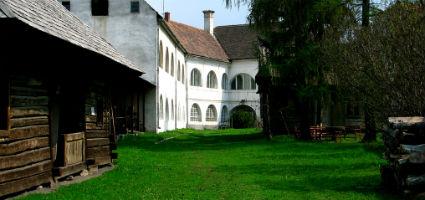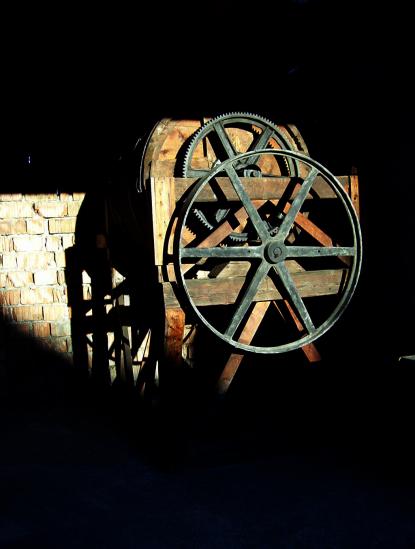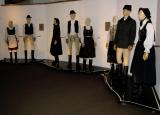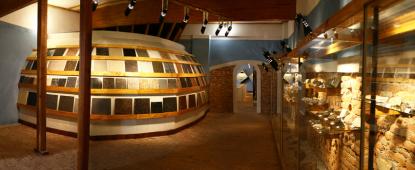2024. April 19. Friday
Tarisznyás Márton Museum - Gheorgheni
 |
Address: 535500, Gheorgheni str. Rákóczi 1. / Rákoczi Ferenc út 1.
Phone number: (266) 365-229
E-mail: muzeum@tmmuzeum.ro
Opening hours: 01.05-15.10.: Tue-Fri 9-17, Sat-Sun 10-17
16.10-30.04.: Tue-Fri 9-17, Sat-Sun: on prior notice |
The bases of the present collection was amassed in the 1950's by intellectuals and artists of Gyergyó who were entirely in favour of establishing an exhibition. Among the founders were Andor Csiby, Ákos Bálint, János Karácsony and Géza Vámszer, Dénes Kovács from Kolozsvár and Marosvásárhely. The art student Márton Tarisznyás (1927-1980) joined the organizers. He served and for some time managed the museum, passionatly collected records related to the past of the people of Gyergyó that he also edited and exhibited.
He became the martyr of scientific work. The death of the most outstanding historian of Gyergyó is a painful loss for science. His only book was published posthumously and the material of a three-volume study, the work of over three decades was left behind derelict.
Our museum was named for Márton Tarisznyás in 1992 in honour of his memory since his persona was vital in the operation of the museum.
The collections were positioned to their present location in 1962. The centre of the compilation is the national building, one of the oldest civic stone buildings in town. The Armenian merchant house was built from 1770 to 1780. It was later on bought by Austrian authorities in 1821. The first Noble Székely Troops Regiment Headquarters of Gyergyó operated in the building where the revolutionists arrested Austrian officers in 1848.
We regularly hold cultural and scientific events in the house but we also open temporary exhibitions while a permanent exhibition constantly awaits the visitors at the museum building. The Ethnography Collection that gives a concise picture of regional characteristics is of special interest. Due to the collecting and research work of Márton Tarisznyás, a rich collection of records related to the ethnography of forests demonstrate methods of logging. The folk cloths exhibition opened in December 2006 adds to it. It presents characteristic folk cloths of Transylvania and their variations worn by Romanians and Csángó living in the region. We show traditional tools and equipment of natural textile production.
We are planning to open a mill history permanent exhibition in the near future, while it is open as a temporary exhibition at Békény Street. A Tinka Water Mill from the 19th century, as well as a authentic copy of a water saw from Eszenyő are shown among others. For that matter, a number of folk architecture related objects are displayed in the yard of the museum that amends the exhibitions inside the building. Old peasant houses, mills, machines, applications are the body of the open air exhibition.
The Archaeology Collection significantly grew in number after the excavation works at the Lázár Castle. Finds from the 15-18th century were unearthed during the excavation works. Part of the restored finds is shown at the Castle History Exhibition at the Lázár Castle. The exhibition reviews the life of nobility in the region, as well as tile and ceramics crafts.
Two basic collections are the body of the fine art collection. The series of the painter János Karácsony (1899-1974) is imbibed with the Impressionist Nagybánya spirit. The oil paintings, aquarelles, coal drawings are both important artworks and documents of the local architecture. The other important collection is the donation of the collector of arts Vencel Elekes. His private collection included a great variation of paintings, graphics, cuts, ex-libris, and statues from the second half of the 20th century. All trends are represented.
The Natural Sciences Collection consists of the flora and fauna of the Gyergyó Basin, hunts, birds etc. This collection was amassed and donated by Mihály Elekes in the 1960's. From the 1990's, the collection of butterfly and insect was added hundreds of new pieces we regularly show at temporary exhibitions. The stone and mineral exhibition under development is also of interest. It is the unparalleled collection of the geologist Gyula Jakab we included in our collection in 2004 and showed the same year.
The museum is planning to open several permanent exhibitions, set up new services both for researchers and visitors.
He became the martyr of scientific work. The death of the most outstanding historian of Gyergyó is a painful loss for science. His only book was published posthumously and the material of a three-volume study, the work of over three decades was left behind derelict.
Our museum was named for Márton Tarisznyás in 1992 in honour of his memory since his persona was vital in the operation of the museum.
The collections were positioned to their present location in 1962. The centre of the compilation is the national building, one of the oldest civic stone buildings in town. The Armenian merchant house was built from 1770 to 1780. It was later on bought by Austrian authorities in 1821. The first Noble Székely Troops Regiment Headquarters of Gyergyó operated in the building where the revolutionists arrested Austrian officers in 1848.
We regularly hold cultural and scientific events in the house but we also open temporary exhibitions while a permanent exhibition constantly awaits the visitors at the museum building. The Ethnography Collection that gives a concise picture of regional characteristics is of special interest. Due to the collecting and research work of Márton Tarisznyás, a rich collection of records related to the ethnography of forests demonstrate methods of logging. The folk cloths exhibition opened in December 2006 adds to it. It presents characteristic folk cloths of Transylvania and their variations worn by Romanians and Csángó living in the region. We show traditional tools and equipment of natural textile production.
We are planning to open a mill history permanent exhibition in the near future, while it is open as a temporary exhibition at Békény Street. A Tinka Water Mill from the 19th century, as well as a authentic copy of a water saw from Eszenyő are shown among others. For that matter, a number of folk architecture related objects are displayed in the yard of the museum that amends the exhibitions inside the building. Old peasant houses, mills, machines, applications are the body of the open air exhibition.
The Archaeology Collection significantly grew in number after the excavation works at the Lázár Castle. Finds from the 15-18th century were unearthed during the excavation works. Part of the restored finds is shown at the Castle History Exhibition at the Lázár Castle. The exhibition reviews the life of nobility in the region, as well as tile and ceramics crafts.
Two basic collections are the body of the fine art collection. The series of the painter János Karácsony (1899-1974) is imbibed with the Impressionist Nagybánya spirit. The oil paintings, aquarelles, coal drawings are both important artworks and documents of the local architecture. The other important collection is the donation of the collector of arts Vencel Elekes. His private collection included a great variation of paintings, graphics, cuts, ex-libris, and statues from the second half of the 20th century. All trends are represented.
The Natural Sciences Collection consists of the flora and fauna of the Gyergyó Basin, hunts, birds etc. This collection was amassed and donated by Mihály Elekes in the 1960's. From the 1990's, the collection of butterfly and insect was added hundreds of new pieces we regularly show at temporary exhibitions. The stone and mineral exhibition under development is also of interest. It is the unparalleled collection of the geologist Gyula Jakab we included in our collection in 2004 and showed the same year.
The museum is planning to open several permanent exhibitions, set up new services both for researchers and visitors.


